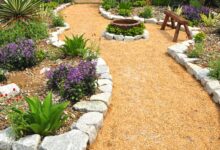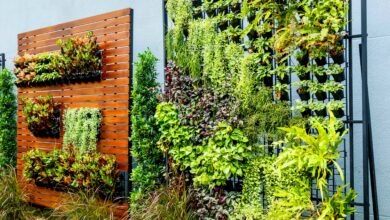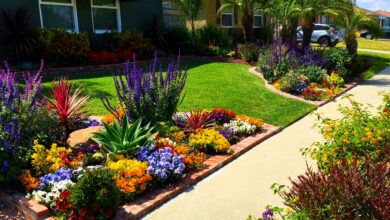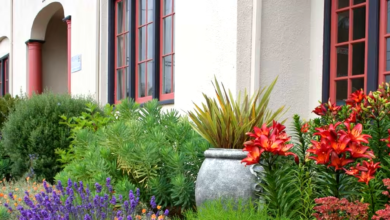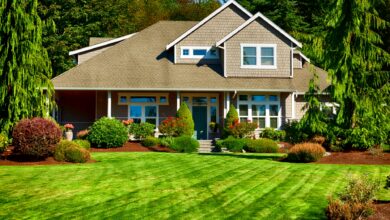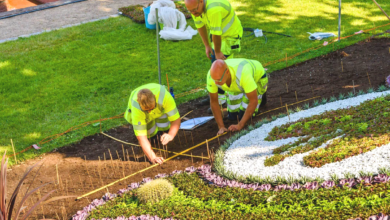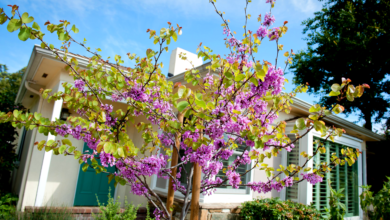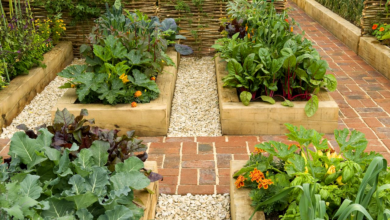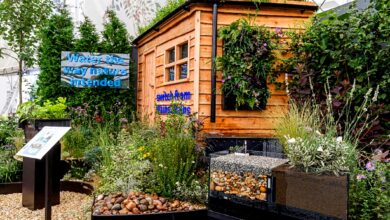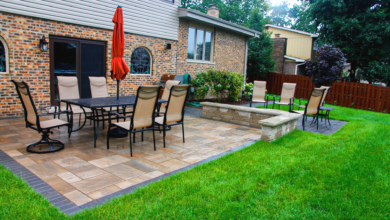Affordable Gardening and Landscape Design in Tennessee
In this guide, we'll explore the most effective and affordable gardening and landscape design strategies tailored to Tennessee's unique conditions.
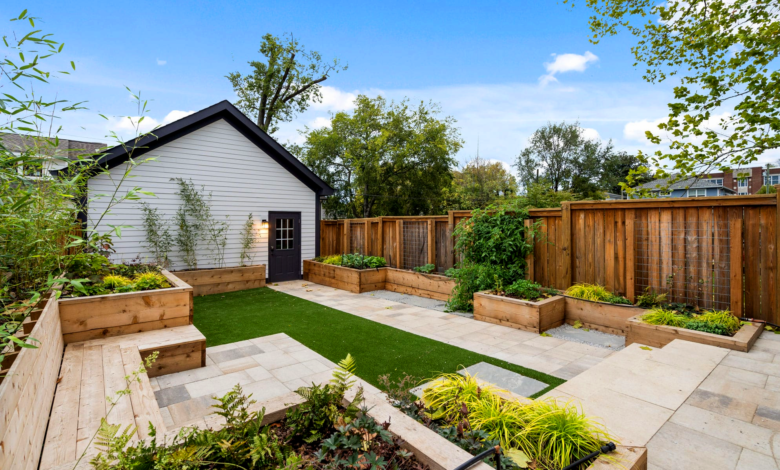
Gardening and landscape design are not just about beautifying your home but also about creating an outdoor space that enhances your quality of life. If you live in Tennessee, you know that the state’s diverse climate provides an excellent environment for a variety of plants and landscape styles. However, the cost of landscaping and gardening can quickly add up. Fortunately, there are many ways to create a beautiful, thriving garden and landscape without breaking the bank. In this guide, we’ll explore the most effective and affordable gardening and landscape design strategies tailored to Tennessee’s unique conditions.
1. Understanding Tennessee’s Climate and Soil
Tennessee has a humid subtropical climate, characterized by hot summers and mild winters. This means that many plants can thrive year-round, making gardening more cost-effective because you don’t have to replace plants frequently.
Soil Types in Tennessee:
- Clay soil: Found in many parts of the state, clay soil retains moisture well but can be compacted easily.
- Loamy soil: Ideal for gardening, loamy soil is a mix of sand, silt, and clay and provides good drainage.
- Sandy soil drains quickly and is excellent for drought-resistant plants.
Understanding your soil type is crucial for selecting the right plants and amendments, saving money on unnecessary fertilizers and soil conditioners.
2. Budget-Friendly Landscape Design Tips
Use Native Plants
Native plants are adapted to Tennessee’s climate and soil conditions, requiring less water, fertilizer, and maintenance. Some excellent native plants for Tennessee include:
- Black-eyed Susan
- Coneflowers
- Eastern Redbud trees
- Tennessee Iris (state flower)
These plants thrive naturally, reducing your gardening expenses and increasing sustainability.
DIY Landscaping
Hiring a professional landscaper can be expensive, but many aspects of landscaping can be done yourself with the right planning. Here are some DIY-friendly landscape projects:
- Mulching: helps retain moisture and suppress weeds.
- Rock Gardens: A low-maintenance and cost-effective way to add character to your yard.
- Raised Garden Beds: Improve soil drainage and make gardening more accessible.
Use Affordable landscaping Elements
Hardscaping refers to non-plant elements like pathways, patios, and garden borders. Consider these cost-effective ideas:
- Use reclaimed bricks or stones instead of purchasing new ones.
- Create gravel pathways instead of expensive paved walkways.
- Use old wooden pallets to create DIY garden furniture.
3. Affordable Gardening Techniques
Composting to Enrich Soil
Instead of buying expensive fertilizers, create your own compost using kitchen scraps, grass clippings, and leaves. Compost enriches the soil, improves plant health, and reduces waste.
Growing Perennials Instead of Annuals
Annual plants must be replaced each year, increasing costs. Perennials, on the other hand, return year after year. Some low-maintenance perennials suitable for Tennessee include:
- Daylilies
- Hostas
- Lavender
- Peonies
Seed Starting Instead of Buying Mature Plants
Starting plants from seeds is much cheaper than buying fully grown plants. Some easy-to-grow plants from seeds include tomatoes, basil, and zinnias.
4. Low-Cost Watering Solutions
Watering can be one of the most expensive aspects of gardening, especially during Tennessee’s hot summers. Reduce costs with these methods:
- Rain Barrels: Collect rainwater to use for watering plants.
- Drip Irrigation Systems: Deliver water directly to plant roots, reducing waste.
- Watering in the morning or evening: reduces evaporation, maximizing water use.
5. Sustainable Lawn Care on a Budget
Reduce Lawn Size
Lawns require frequent mowing, watering, and fertilizing. Reducing the size of your lawn by adding garden beds, ground cover plants, or hardscaping elements can cut maintenance costs.
Choose Low-Maintenance Grass Varieties
Opt for drought-resistant and slow-growing grass types, such as:
- Tall Fescue
- Zoysia Grass
- Buffalo Grass
Mow Smartly
Keep grass at a height of around 3 inches to encourage deep root growth and reduce watering needs.
6. Repurposing and Recycling for Budget Landscaping
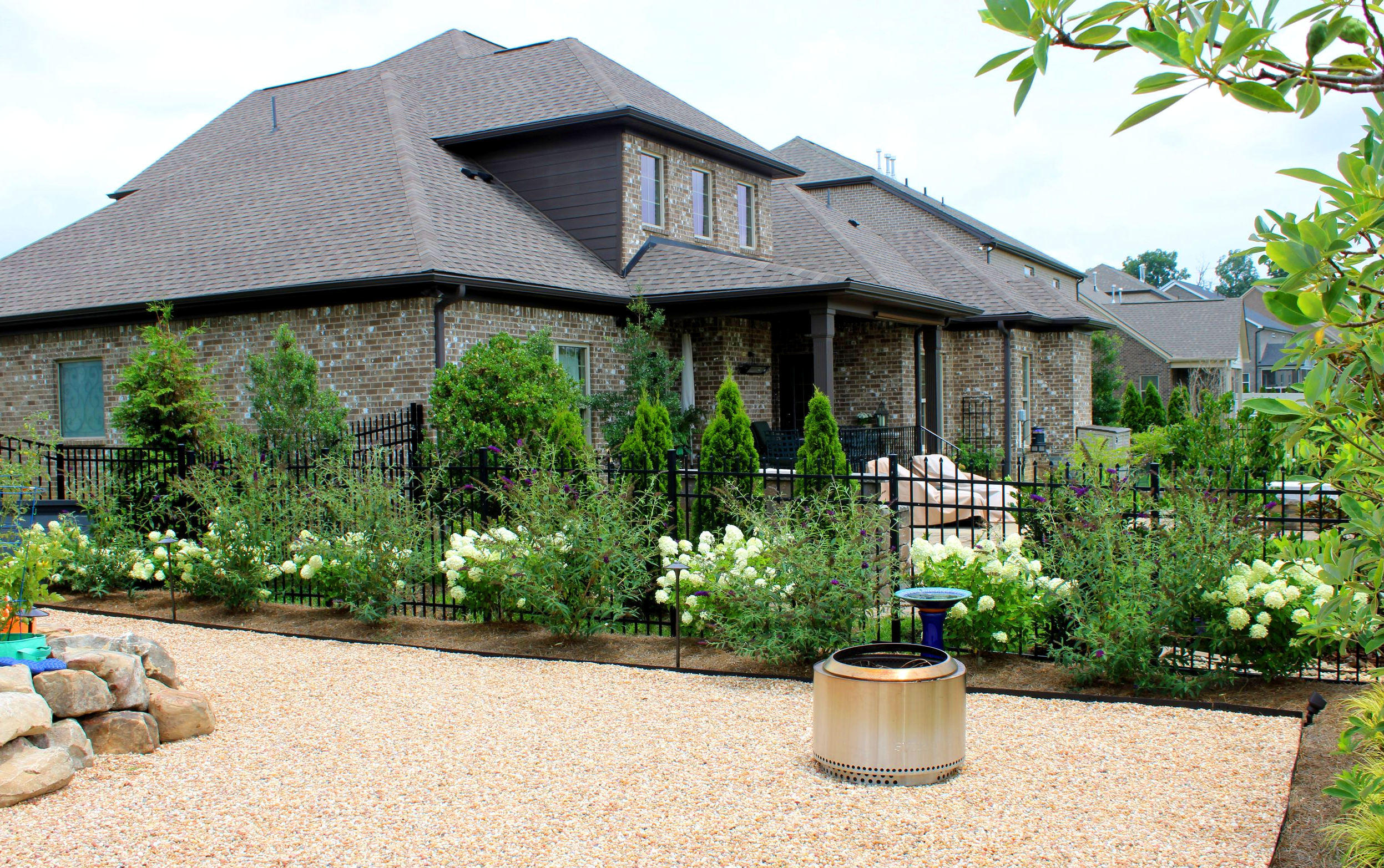
Use Recycled Materials
- Old tires can be turned into planters.
- Broken concrete slabs can be used for walkways.
- Wooden pallets can be repurposed into garden furniture or raised beds.
Find Free or Cheap Plants and Materials
- Check local plant swaps or community gardening groups.
- Visit farmer’s markets for discounted plants.
- Look for free mulch or compost from city recycling programs.
7. Seasonal Gardening Tips to Save Money
Spring
- Start seeds indoors to save money on plants.
- Prune perennials to encourage healthy growth.
Summer
- Mulch to retain moisture and reduce watering costs.
- Water deeply and less frequently to encourage deep root growth.
Fall
- Collect and compost leaves instead of buying mulch.
- Divide perennials and share with neighbors to save on new plants.
Winter
- Plan your garden for the next year to avoid impulse purchases.
- Maintain garden tools to extend their lifespan.
8. Utilizing Community Resources for Affordable Gardening
Join a Community Garden
Many Tennessee cities have community gardens where you can grow your own plants at a low cost while learning from other gardeners.
Attend Gardening Workshops
Local extension offices, botanical gardens, and universities often provide free or low-cost gardening workshops.
Check Local Government Programs
Some municipalities offer free compost, mulch, or tree-planting programs.
Conclusion
Creating a stunning and functional garden in Tennessee doesn’t have to be expensive. By choosing native plants, practicing DIY landscaping, using sustainable gardening methods, and utilizing community resources, you can design an affordable and thriving outdoor space. Whether you’re looking to grow your own vegetables, create a peaceful retreat, or enhance your home’s curb appeal, these cost-effective strategies will help you achieve your gardening goals without overspending.

